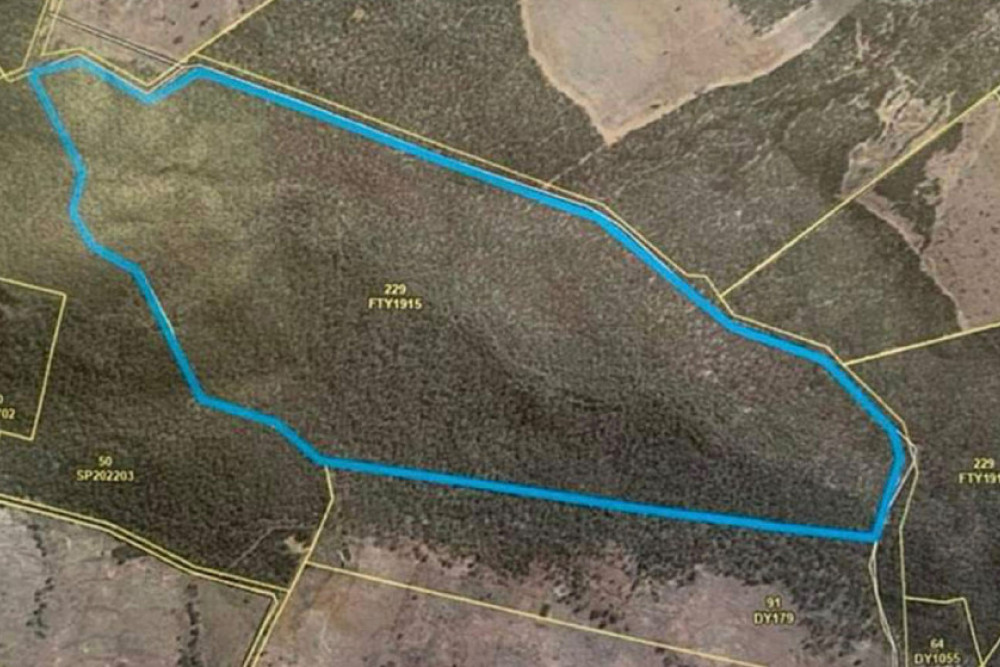6 July, 2022
Koala habitat under threat
Concerns are escalating over a proposal to undertake test drilling for basalt on a mountain south west of Millmerran that is a known koala habitat and home to grass trees believed to be hundreds of years old.

The land is part of Domville State Forest and an adjoining landowner, Ken Stower, has a lease on the site, granted to his family several decades ago.
Mr Stower says he is “ropable” since learning via a letter from the Department of Agriculture and Fisheries in Gympie that permission had been given to a quarrying company from Brisbane to begin drilling on the land “whenever they want to.”
He said the site contained unique rock formations and towering grass trees and was a known Indigenous tool making site.
He’d had university researchers visit over the years looking at Aboriginal artefacts found there.
It is also marked as important koala habitat on Australian Koala Foundation maps.
Mr Stower believes the Department of Agriculture and Fisheries has received a large offer for the purchase of the land from the quarry company planning to extract basalt for use in the Inland Rail project.
He fears that even if test drilling and the necessary roading for that alone is undertaken, unique aspects of the site will be lost.
“They’ll have to bulldoze roads through it to access drilling rigs,” he said.
Mr Stower said his family, including son Jim who also owns land adjoining the forest, and several locals were among a growing group of concerned residents.
“I want to do the best I can to save this hill,” he said.
Millmerran vet Brenda Laurence believes the area is also habitat for a rare butterfly only found there.
She hopes to prevent any work going ahead until more open discussions have occurred.
“They can’t just go in an be responsible for the deaths of koalas and destruction of Aboriginal sites.”
Australian Koala Foundation chairman Deborah Tabart was aware of habitat in that part of Domville State Forest being under threat, saying: “We have mapped it but we are not clear whether this clearing is to occur and more importantly what impact it will have.”
State Member for Southern Downs James Lister said he was “watching closely for development and that the government does the right thing. Particularly in relation to environmental and indigenous cultural concerns.”
Minister for Agricultural Industry Development and Fisheries and Minister for Rural Communities Mark Furner, in a response to enquiries Mr Lister made to the State Government earlier this year, stated: “The Forestry Act 1959 provides that the primary purpose of a State forest is to support the sale and disposal of forest products and quarry material. Consistent with this
purpose, I understand that the Department of Agriculture and Fisheries (DAF) is currently considering a proposal to purchase state-owned quarry material from part of Domville State Forest.
“I also note that the site of the proposed quarry is mostly within a designated Key Resource Area (KRA 163). KRAs are identified locations across Queensland that contain important extractive resources such as sand, gravel and rock that are considered to be of State or regional significance. The project proponent has indicated that the site contains good quality (hard) rock material suitable to support large scale road, rail and other infrastructure projects – such as the Inland Rail Project – in the Toowoomba, Goondiwindi and surrounding regions.
“As part of the decision-making process about the proposal, DAF officers have recently undertaken a number of initial searches and due diligence activities relating to the proposal.
“As a result of these initial assessments, the proposed quarry area will be restricted to a designated area towards the western side of Domville State Forest in order to avoid impacts on certain fauna and flora in other areas of the State forest.
“Nevertheless, sales permits under the Act essentially provide resource entitlement and, therefore, permit holders also need to satisfy all other legislative approvals and clearances before DAF will authorise the commencement of any quarrying activities. These include obtaining the required planning, environmental, cultural heritage, health and safety and other approvals from appropriate authorities.”
“DAF is not the responsible agency for these matters and therefore they need to be considered by those agencies with the requisite expertise and legislative responsibility.”


